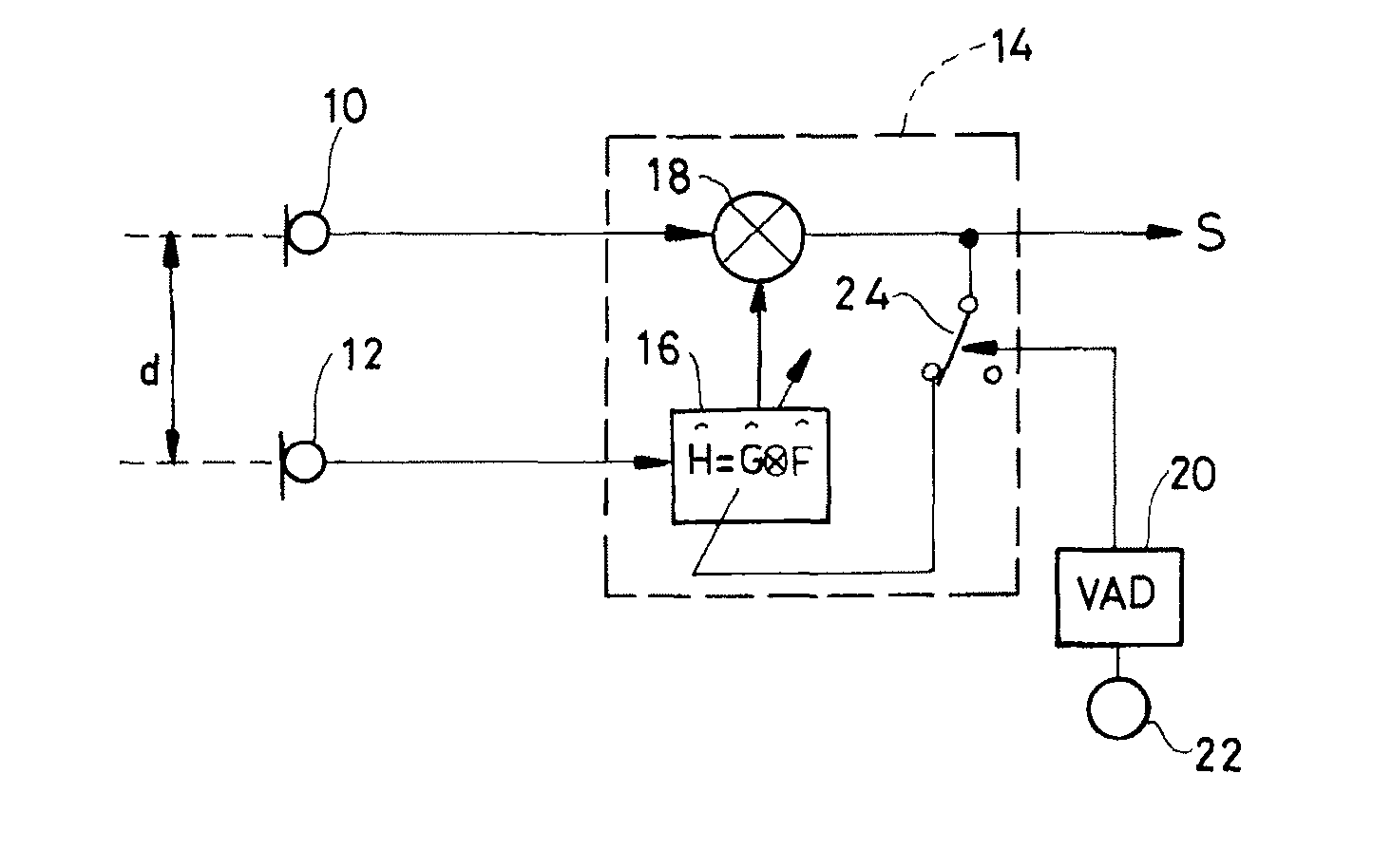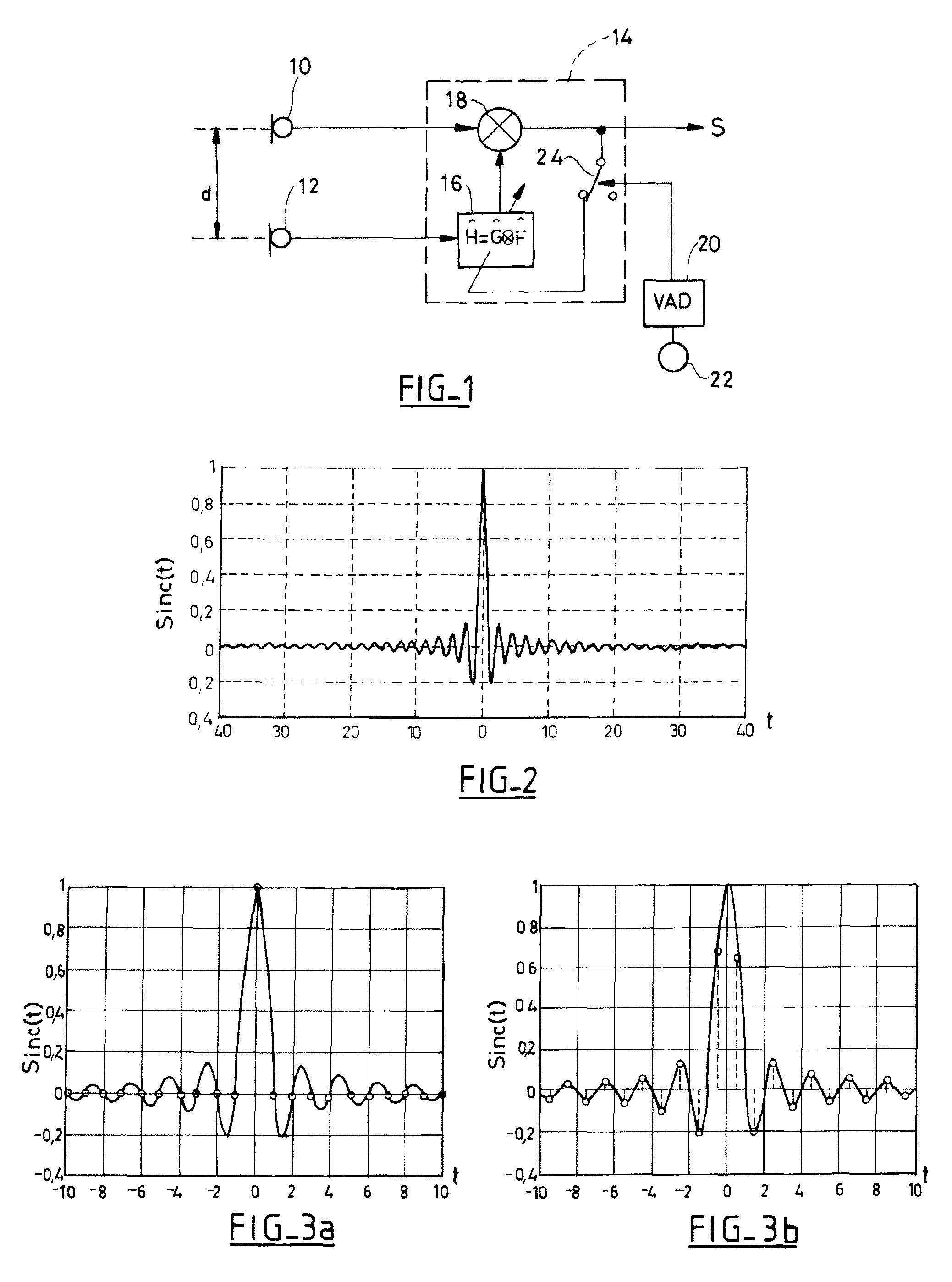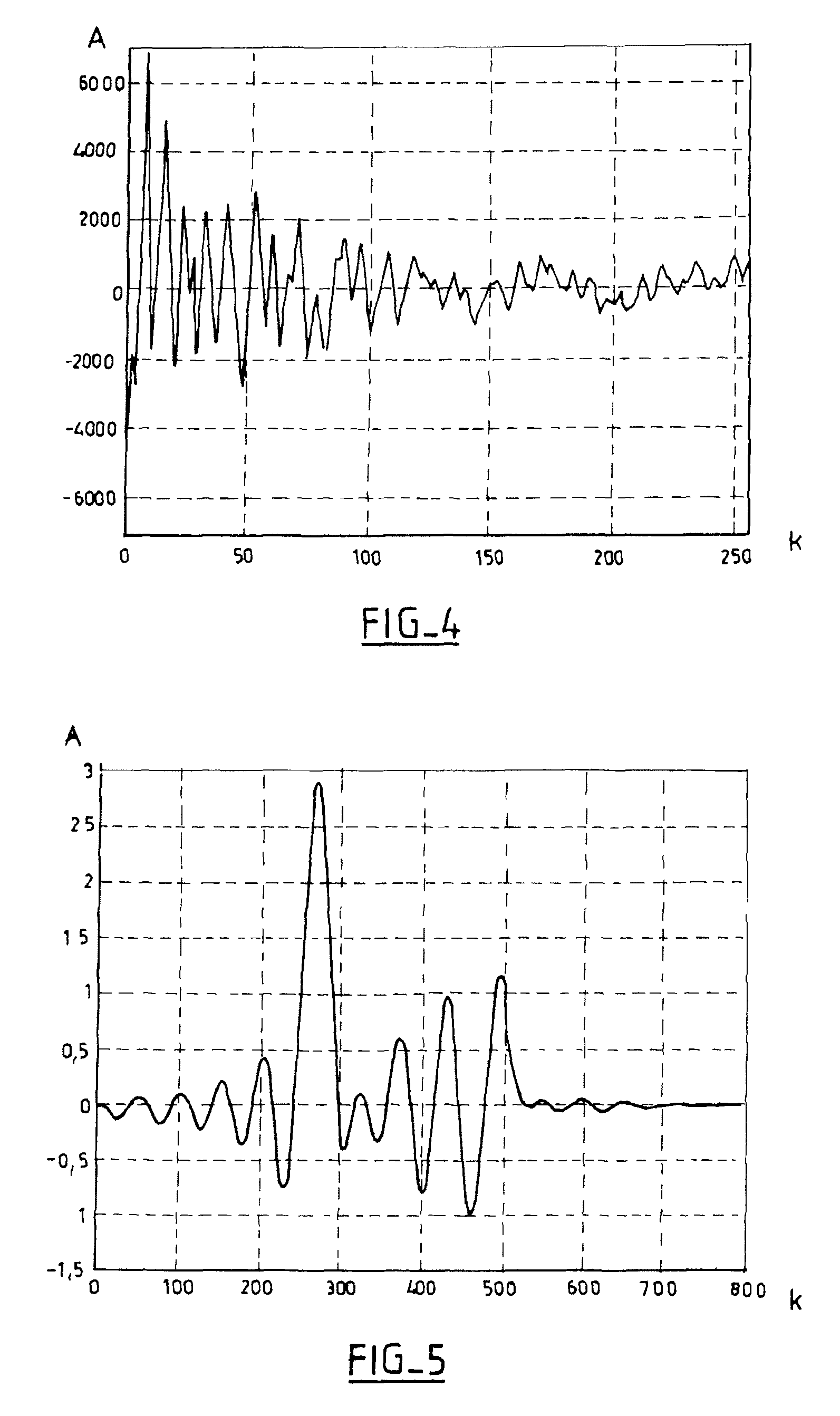Audio equipment including means for de-noising a speech signal by fractional delay filtering, in particular for a “hands-free” telephony system
a fractional delay and filtering technology, applied in the field of speech processing, can solve the problems of difficult speech shape recognition, unintelligible speech, and relatively high noise level, and achieve the effect of reducing nois
- Summary
- Abstract
- Description
- Claims
- Application Information
AI Technical Summary
Benefits of technology
Problems solved by technology
Method used
Image
Examples
Embodiment Construction
[0043]FIG. 1 is a block diagram showing the various functions implemented by the invention.
[0044]The process of the invention is implemented by software means, represented by various functional blocks corresponding to appropriate algorithms executed by a microcontroller or a digital signal processor. Although for clarity of explanation the various functions are shown in the form of distinct modules, they make use of elements in common and in practice they correspond to a plurality of functions performed overall by a single piece of software.
[0045]The signal that it is desired to de-noise comes from an array of microphone sensors that, in the minimum configuration shown, may comprise merely an array of two sensors arranged in a predetermined configuration, each sensor being constituted by a corresponding respective microphone 10, 12.
[0046]Nevertheless, the invention may be generalized to an array of more than two microphone sensors, and / or to microphone sensors in which each sensor i...
PUM
 Login to View More
Login to View More Abstract
Description
Claims
Application Information
 Login to View More
Login to View More - R&D
- Intellectual Property
- Life Sciences
- Materials
- Tech Scout
- Unparalleled Data Quality
- Higher Quality Content
- 60% Fewer Hallucinations
Browse by: Latest US Patents, China's latest patents, Technical Efficacy Thesaurus, Application Domain, Technology Topic, Popular Technical Reports.
© 2025 PatSnap. All rights reserved.Legal|Privacy policy|Modern Slavery Act Transparency Statement|Sitemap|About US| Contact US: help@patsnap.com



